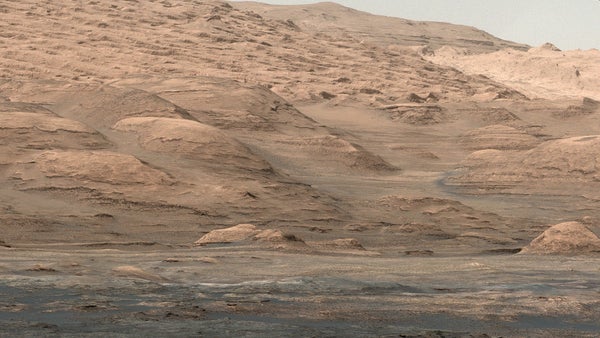SpaceX founder, CEO and lead designer Elon Musk is unveiling his humans-to-Mars plan at next month's 67th International Astronautical Congress (IAC), to be held in Guadalajara, Mexico. The world space meeting runs from Sept. 26-30.
On the second day of the IAC, during a special keynote entitled "Making Humans a Multiplanetary Species," Musk will discuss the long-term technical challenges that need to be solved to support the creation of a permanent, self-sustaining human presence on Mars.
The technical presentation will focus on potential architectures for colonizing the Red Planet that industry, government and the scientific community can collaborate on in the years ahead. [SpaceX's Red Dragon: A Private Mars in Pictures]
On supporting science journalism
If you're enjoying this article, consider supporting our award-winning journalism by subscribing. By purchasing a subscription you are helping to ensure the future of impactful stories about the discoveries and ideas shaping our world today.
Red Dragon
In the past, Musk has detailed his intention to use a Red Dragon spacecraft to fly to Mars in un-crewed mode in the 2018 time period. Later flights of the craft would transport humans to the planet.
Using supersonic retro propulsion to touch down on the Red Planet, the Red Dragon may well deploy scientific devices, particularly hardware that could demonstrate made-on-Mars propellant.
Gwynne Shotwell, President of SpaceX, underscored her firm's Mars plans on Aug. 9 at the 30th annual Conference on Small Satellites, held at Utah State University in Logan, Utah.
"If you talked about this 15 years ago we probably would have been institutionalized," Shotwell told a standing room only audience. "The conversation has changed … now we can talk about going to Mars," she said.
Shotwell said retro-propulsion is "really the answer" contrasted to airfoils, parachutes and ballutes. "In addition, retro-propulsion will scale. We're not talking about dropping 10 tons on Mars. We'll be dropping hundreds of tons on Mars … dropping, I mean, settling down gently."
Raptor engine
A key SpaceX propulsion development for Mars is the Raptor, a liquid oxygen/methane engine, Shotwell noted, pointing out that the first Raptor engine will soon be test fired.
In terms of what a 2018 un-crewed Red Dragon might take to Mars, "we haven't figured out how do you get stuff in Dragon onto the surface, but we're working on it," Shotwell said.
"We're working on some ISRU [in-situ resource utilization] payloads," Shotwell added. "I need my spaceship back to take more people to Mars. The return trip is free."
Clothing opportunities
In terms of degree of difficulty for SpaceX Mars planning, Shotwell said that the hardest thing is getting return fuel from Martian resources. "Mining your own fuel on the surface to lift off again…because the return trip I think is really important," she said.
Shotwell said that SpaceX is looking at some electric propulsion technologies for in-space activities.
"There's a lot to do," Shotwell observed. "I want to see transportation to other solar systems … get into a spaceship and go to some crazy planet. All those new clothing opportunities," she suggested.
Red Planet Resources
To view a trailer for National Geographic Channel's global event series "Mars," premiering in November, see:
Among those interviewed is Elon Musk, chief rocketeer at SpaceX:
"The future of humanity is fundamentally going to bifurcate along one of two directions: either we're going to become a multi-planet species and a spacefaring civilization, or we're going to be stuck on one planet until some eventual extinction event. In order for me to be excited and inspired about the future, it's got to be the first option," Musk says in the series.
Before "Mars" premiers, there will be an extensive digital virtual-reality experience available at: www.MakeMarsHome.com
For more information on the book – "Mars: Our Future on the Red Planet" (Disclaimer: Leonard David is the book's author) — to be released Oct. 25, go to:
https://shop.nationalgeographic.com/product/books/books/new-books/mars
Also go to Amazon at:
http://www.amazon.com/Mars-Our-Future-Red-Planet/dp/1426217587/ref=sr_1_1?ie
For a pre-look at Musk's masterplan for Mars, go to this video via:
http://www.recode.net/2016/6/6/11840936/elon-musk-tesla-spacex-mars-full-video-code
Copyright 2016 SPACE.com, a Purch company. All rights reserved. This material may not be published, broadcast, rewritten or redistributed.
